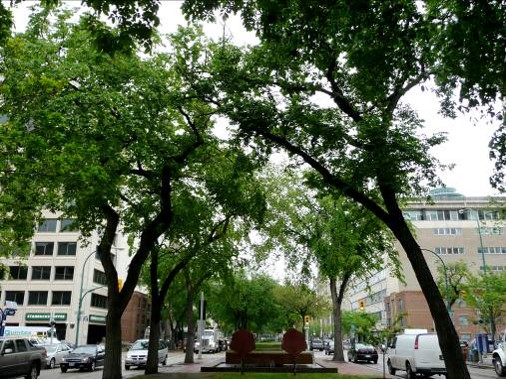About Urban Forest Research
There are several organizations currently researching how we can better manage and protect our urban forest. Trees Winnipeg is proud to be a partner in these exciting projects.
Understanding the Value of our Urban Forest
Our urban forest does a lot for us – it provides shelter and affects our micro-climate and air quality. Trees provide a home for urban wildlife, manage stormwater runoff, reduce our heating and cooling costs, and even raise our property values. Have you ever wondered how much all these benefits are worth? What would it cost Winnipeggers if all our trees were gone? Trees Winnipeg is currently collecting data across the city to find out. The University of Winnipeg and the City of Winnipeg are key supporters of this project.
Preserving a Living Landmark: The Broadway Elms
Winnipeg's urban forest consists of an estimated 8 million trees, subject to various stresses, including compacted soil, soil moisture extremes, and reduced soil fertility. The City of Winnipeg foresters are interested in improving mature trees' growing conditions to improve their health and longevity. Broadway is a high-density thoroughfare in downtown Winnipeg, and mature elm trees line the sidewalks and median. Due to the area's age and prominent location, the elms along Broadway hold special significance for Winnipeg residents and visitors. The declining health of these trees is of particular concern. Given the vast rise of impacts caused by poor soil conditions, soil amendments or additives may improve urban trees' growing conditions.
The goals of this project are to:
- Compare the condition of mature elms along Broadway to that of elms in other parts of the city;
- Determine how mature elms in a high-traffic urban environment respond to vertical mulching treatments;
- Provide recommendations to urban forest managers for improving growing conditions to maintain or improve the condition of mature urban trees. The University of Winnipeg is leading this long-term research project.


